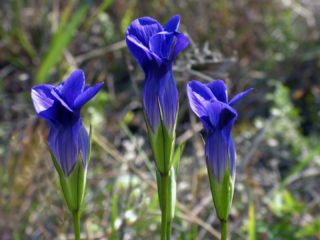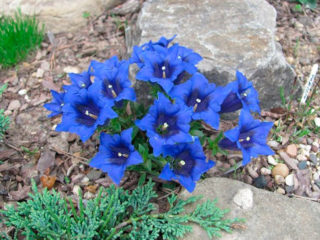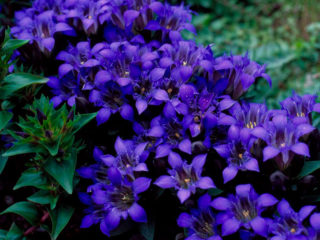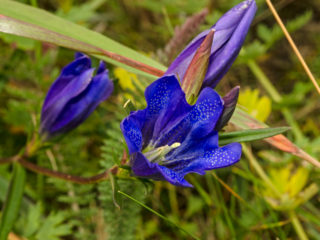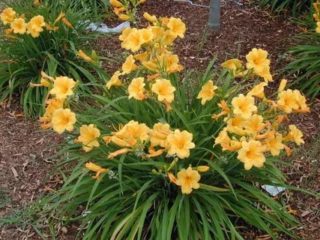Content
The stemless gentian belongs to the genus of dwarf shrubs. It is a plant with a rich history, a whole range of medicinal properties and stunning bright colors. Gardeners often use various types of gentian when decorating plots, each of them is unique and inimitable, and some are listed in the Red Book.

The azure color of the stemless gentian attracts attention from afar
Description of the species
A perennial or annual herbaceous plant grows in temperate climates, is found among rocky mountains, near water bodies, in the vastness of flooded meadows. People ignorant of botany will call a beautiful flower a bell, to which flowering buds look so much like. Gentiana kochiana or gentian Koch grows mainly in the mountains of Western Europe. Its height rarely reaches 10 cm; it is a carpet of lush greenery and large bright flowers. The peculiarity of stemless gentian buds is that they close in rainy weather.
The culture has about 400 species. The height of the bushes reaches 50 cm, they have long, straight shoots. Funnel-shaped flowers open depending on the specific species - in autumn, summer or spring. The foliage has a bitter taste, which determines the name of the plant. The beautiful flowers smell deliciously of cut grass or honey. Most plant species are bright blue and similar shades, purple, white and even yellow bells are also found.
The plant is widely used in folk medicine. Even in ancient Greece, healers used this plant to treat the stomach. In Rome, infusions and decoctions based on beautiful flowers, stems or roots helped in the fight against bruises, abrasions, and poisonous snake bites. The beneficial effects of gentian on internal organs, including the liver, kidneys and stomach, were revealed by the healers of the Middle Ages.

Funnel-shaped flowers resemble varietal petunia
Application in landscape design
Gardeners willingly plant various types of gentian on their plots, combining them in color, shape or size. Bright flowers are good for creating mono compositions, their main purpose is to decorate alpine slides. A scattering of gentian between stones and rocks will be combined with primrose, spring lumbago, and saxifrage.
A carpet of low-growing plant species is suitable for decorating curbs, stone paths. When decorating a personal plot, gardeners usually take into account the property of different types of gentian to bloom at different times. Thanks to this, it is possible to achieve continuous flowering of bright bells from spring to autumn.
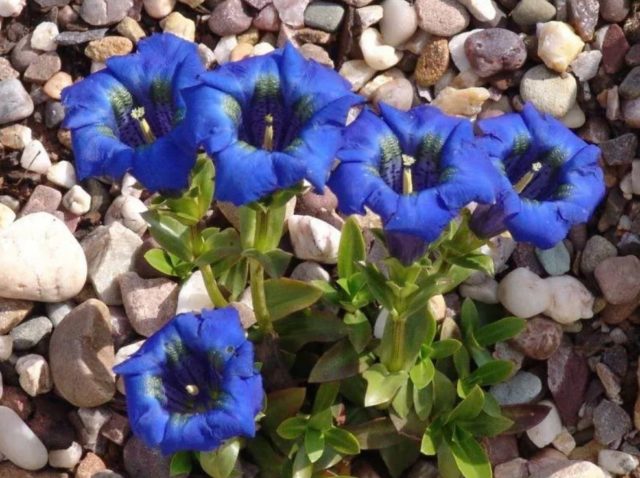
The most common gentian varieties thrive on rocky surfaces.
Breeding features
The gentian is propagated in two ways - by cuttings or using seeds. It is possible to divide the roots of the plant only in spring, at the beginning of the growing season. When the gentian finishes flowering, a box with seeds forms in place of the bells.
Planting and caring for a stemless gentian
Most gardeners agree that it is better to sow the plant immediately in warm soil, without taking seedlings. The gentian adapts to any conditions, grows well in cool regions, but it is considered a rather capricious culture and requires adherence to certain rules in care.
Terms and rules for planting stemless gentian
This variety belongs to those species that bloom in May-June. For these types of gentian, shaded areas are chosen, without direct sunlight. When planting, gravel is added to the bottom of the hole, this is due to the natural habitat of the plant - rocky mountains. The crop requires a nutritious soil with a high fertilizer content.
When planting seedlings for gentian, they dig holes that are 3 times larger than an earthen coma around the root. After planting, the plant is watered with warm water, fertilized with cow dung. Seedlings can be planted at the end of April or before winter - in September.
Watering and feeding schedule
The culture is very hygrophilous. Gardeners need to ensure constant soil moisture in the area where the stemless gentian grows. Particular attention should be paid to watering during a period of severe drought, at the time of flowering and the appearance of new buds. A layer of organic mulch will help reduce the number of fertilizers and keep the soil moist for as long as possible. If you mulch the site at the beginning of spring with peat, sawdust or straw, then you will not need to additionally feed the plant.
Weeding and loosening
When the first shoots appear on the surface of the soil, they need to ensure timely watering and loosening. It is recommended to remove weeds from the site, as well as remove dried flowers, while preserving the decorative effect of the plant.
Preparing for winter
In regions where there is little snow in winter, but severe frosts are possible, it is recommended to cover the area with gentian spruce branches. Deep snow cover is designed to protect the plant from the cold without additional shelter.
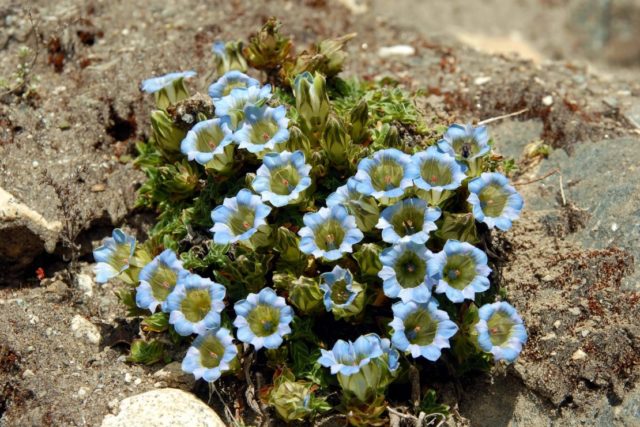
Sky blue stemless gentian in rocky terrain
Diseases and pests
The stemless gentian loves water and needs regular watering, but stagnant water can lead to slugs and snails. These pests eat juicy leaves and beautiful buds. Also, ants, caterpillars, thrips may appear on the gentian or near its plantings. Solutions of insecticidal preparations and some traps placed in the ground will help get rid of pests. Potato rugs will take on snail slugs, half buried bottles with fermented compote or beer will attract the attention of insects.
The most dangerous diseases that plants in the open field are susceptible to are gray rot, spots on leaves, rust, and some viral diseases. It is almost impossible to cure gentian from gray rot. It is required to remove and burn all diseased plants so that the disease does not spread to healthy ones.
Fungal infections include brown spot. Small specks of brown and yellow with purple rims appear on the affected leaves. A solution of copper sulfate, Bordeaux liquid or fungicides will help here.
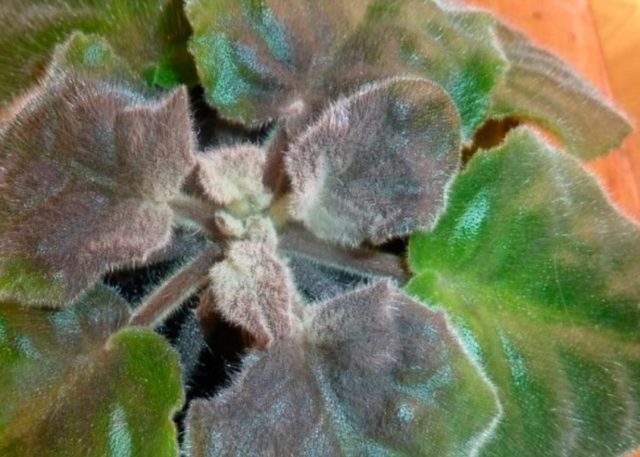
If gray rot affects the leaves of a plant, it cannot be cured.
Conclusion
The stemless gentian is a perennial unpretentious plant that can decorate an alpine hill, a small decorative flower bed, and borders of personal plots. The culture is distinguished by a long flowering period, ease of maintenance and a bright, saturated color of the buds.
